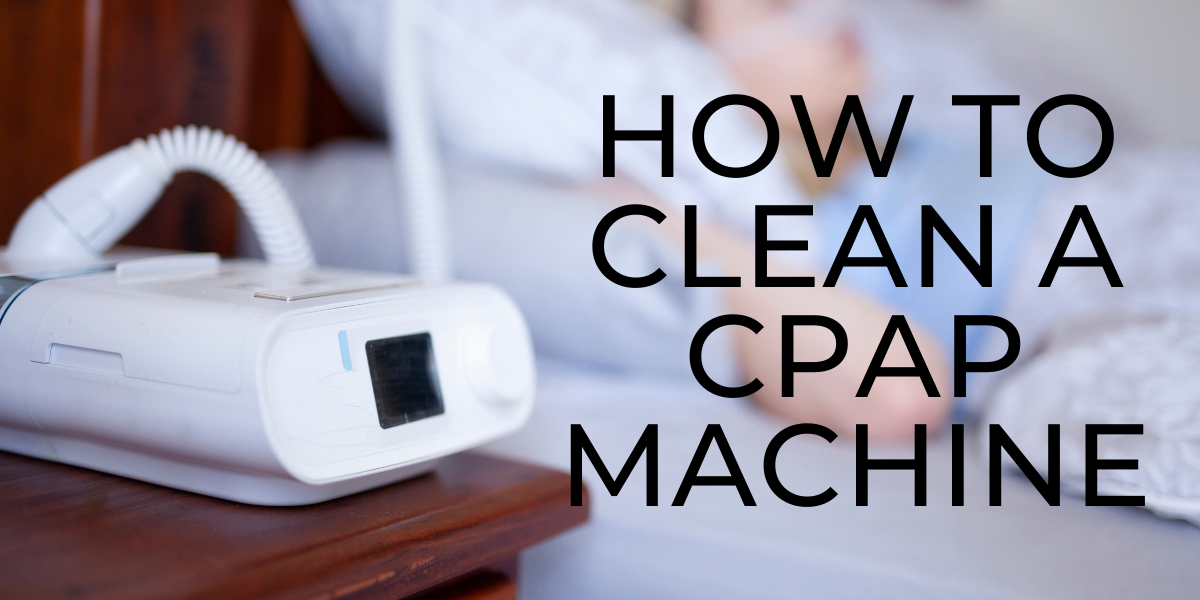
Join Our Email List!
Be the first to know about our latest special offers, promotions, company updates, and more!

If you rely on a CPAP machine to manage your sleep apnea, you're probably aware that it needs to be cleaned from time to time. From dead skin cells to bacteria, mold, and dust, it doesn't take long for buildup to occur on or inside your CPAP equipment that can impact both the effectiveness of your treatment as well as your personal health. Cleaning CPAP equipment regularly and properly increases its longevity and promotes more effective treatment, so it's crucial to have the right CPAP cleaning supplies on hand and know how to clean a CPAP machine.
With that in mind, click below to jump to the section you want to read or keep scrolling to read through all our best practices for cleaning a CPAP. We'll cover the following:
Before learning how to clean a CPAP, it's important to know how often you should clean your CPAP components. Because you interact with each part of the machine differently, some need to be cleaned and sanitized more often than others. Here's a quick breakdown:
While these timeframes represent general best practices, remember that the goal is to keep your CPAP clean and clear of residue or buildup. Use your best judgment if you notice any components becoming discolored more quickly. It is also recommended to clean your mask, hose, and humidifier tank daily if you're sick.
While it may seem simple, learning how to clean CPAP tubing/hoses properly is very important to prevent mold and bacteria growth. The combination of a dark, enclosed space and the ridges in the tubing creates a perfect breeding ground for pathogens. Follow these steps to clean your CPAP hose:
Cleaning your CPAP mask should also be a weekly task but may be done more frequently since it is more often exposed to oils and dead skin cells from your face. We recommend the following steps to clean and sanitize it:
If you use a CPAP humidifier as part of your treatment, it's very important to take time to clean and sanitize the humidifier tank on a weekly basis. Enclosed, damp spaces like this are perfect breeding grounds for bacteria and mildew, so follow these steps to keep it clean and sanitized:
Remember to use only distilled water in your humidifier. This will extend its lifespan by preventing mineral buildup.
When it comes time to clean the CPAP machine itself, things are a little bit easier. Since you'll be protecting the inner components by cleaning your hose, mask, and humidifier, the primary purpose of cleaning your machine is to sanitize and remove dust or oils that have accumulated on the surface. Follow these steps every 2-4 weeks to keep it clean:
Yes, you can clean and sanitize your CPAP with vinegar. Since it is mildly acidic, vinegar can kill 82% of mold, including black mold. But while it helps prevent the accumulation of and kills existing mold and fungus, it won't remove the physical buildup. With that in mind, you shouldn't use vinegar as a pure substitute for washing with soap and warm water. Here are our recommendations for cleaning a CPAP with vinegar:
Keep in mind that while cleaning CPAP equipment is a vital part of extending its lifespan and maintaining proper treatment, many parts still need to be replaced over time. To learn more, head over to our CPAP replacement schedule resource.
That's all we have on how to clean a CPAP machine! The process is simple, so the most important thing is to create a routine that works for you to ensure you keep your machine and components clean and sanitary.
Need to stock up on CPAP cleaning supplies? Here's a list of all the cleaners and products we discussed above. Happy cleaning!
If you have any questions about cleaning CPAP equipment, feel free to contact our customer service experts and we'll be happy to help.
Comments